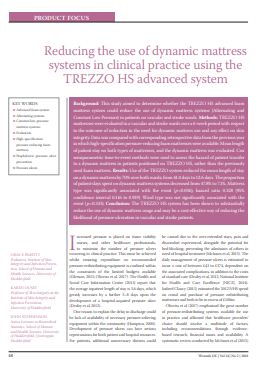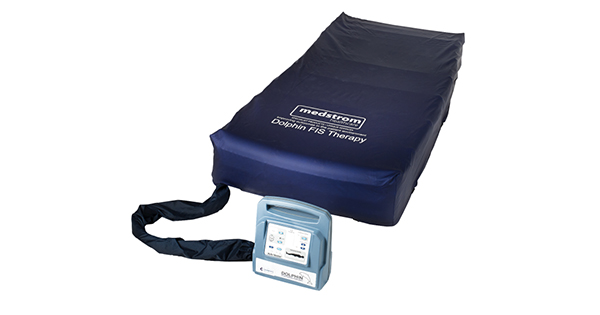Background: This study aimed to determine whether the TREZZO HS advanced foam
mattress system could reduce the use of dynamic mattress systems (Alternating and
Constant Low Pressure) in patients on vascular and stroke wards. Methods: TREZZO HS
mattresses were evaluated in a vascular and stroke wards over a 6-week period with respect to the outcome of reduction in the need for dynamic mattress use and any effect on skinintegrity. Data was compared with corresponding retrospective data from the previous yearin which high-specification pressure-reducing foam mattresses were available. Mean length of patient stay on both types of mattresses, and the dynamic mattress was evaluated. Coxsemiparametric time-to-event methods were used to assess the hazard of patient transfer to a dynamic mattress in patients positioned on TREZZO HS, rather than the previously used foam mattress. Results: Use of the TREZZO system reduced the mean length of stayon a dynamic mattress by 70% over both wards; from 41.0 days to 12.6 days. The proportion of patient-days spent on dynamic mattress systems decreased from 47.8% to 7.1%. Mattresstype was significantly associated with the event (p=0.036); hazard ratio 0.328 (95% confidence interval 0.116 to 0.929). Ward type was not significantly associated with the event (p=0.333). Conclusion: The TREZZO HS system has been shown to substantiallyreduce the use of dynamic mattress usage and may be a cost-effective way of reducing the likelihood of pressure ulceration in vascular and stroke patients.







